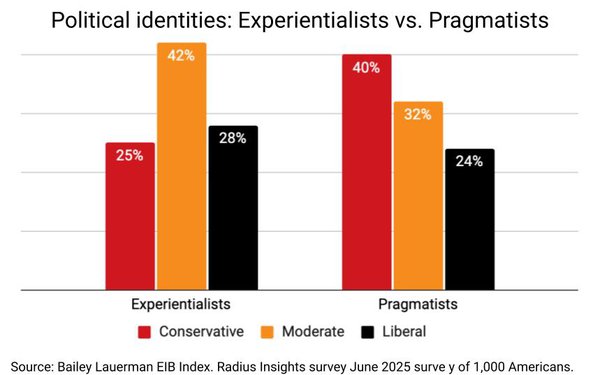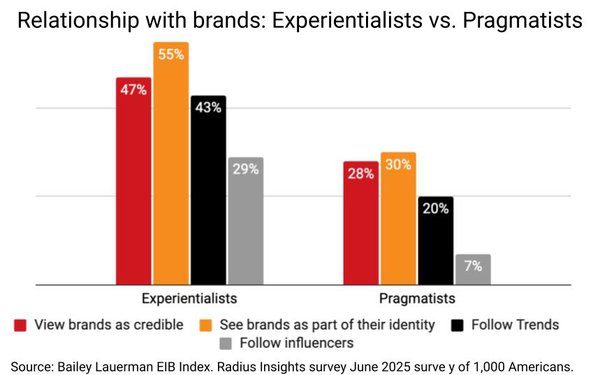
It has been a year since I checked in with Omaha,
Nebraska-based agency Bailey Lauerman, which last year conducted research
identifying opportunities for brand marketers to step up to heal our divided nation. A year later, it has conducted new research to understand not just the politics, but the underlying mindsets
that differentiate the way Americans view the world, including brands, as well as politics.
The research, which Bailey Lauerman calls the EIB Index (which stands for "everything in-between" the 10 largest cities, if not the two coasts, segments Americans into
two very different mindsets: experientialists (48% of the population indexing younger, urban, politically moderate and emotionally connected with brands); and pragmatists (the 52% living in smaller
cities, towns and rural areas who are conservative-leaning and prize practicality and reliability over trends).
advertisement
advertisement
While that 48%/52% split might seem like a relatively even divide, the research
not surprisingly shows there are geographic skews: experientialists tend to live in bigger cities, while pragmatists reside more in the heartland.
And while they also skew politically (see
chart above), the divisions also have profound implications for brand marketers (see chart below), requiring different branding, messaging and media strategies.
"We spend a lot of time as an
industry thinking about these nuanced insights, but one of the most fundamental and surprising findings for us is that people don’t think of brands in the same way. They don’t have the
same kind of relationship with brands," explains Bailey Lauerman CEO Greg Andersen.
As a rule, Andersen says pragmatists could care less about your brand vs. the price and experience it
delivers, whereas experientialists see brands as as an extension of who they are.
Ditto for certain forms of advertising and media, especially online influencers, which pragmatists are far
less likely to follow.
"There are definite implications for media," says Andersen, adding however that the research goes well beyond a media plan or advertising campaign.
"It’s
more about how you would design the overall brand experience based on your business footprint and what the composition of the people are in that business footprint," he explains, adding, "That has
implications on everything from retail design to packaging to website – on everything all the way through."
